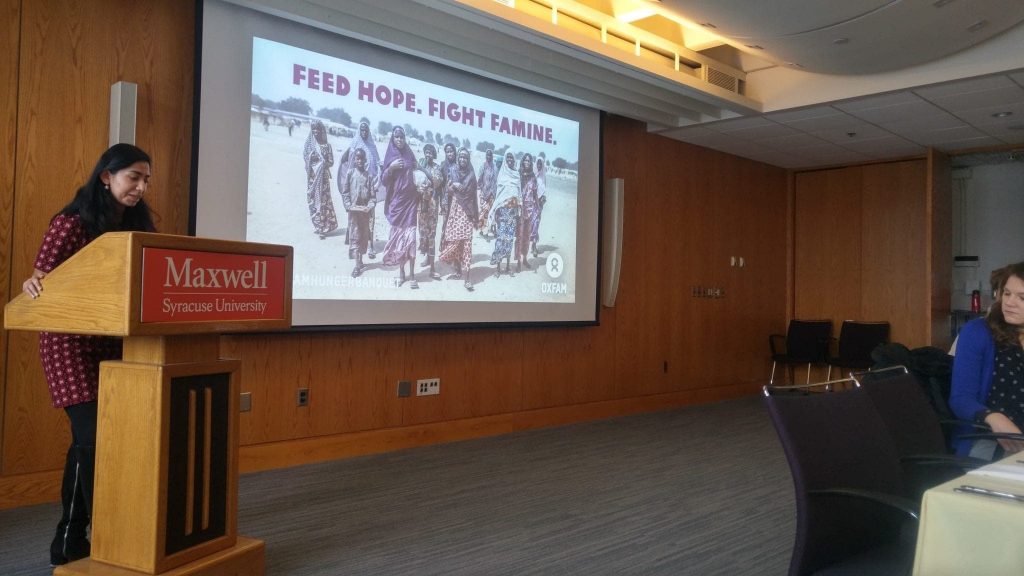Oxfam brings new perspective to SU about world hunger
Oxfam hunger banquet brings reality to SU

In an attempt to bridge the gap between the poor and the wealthy, Oxfam at SU celebrated its second annual Oxfam Hunger Banquet at Eggers Hall. The purpose of the event was to start a conversation about why the economic gaps between the different social classes are so significant and the impact those gaps can cause, specifically when it comes to ensuring basic human needs like food and shelter.
As soon as guests arrived at the event, they drew tickets that randomly assigned them to a high-, middle-, or low-income tier — based on statistics about poverty around the world. Each guest’s experience varied by their assigned income level.
The high-income tier, which represented 20 percent of the world’s population with the highest income per capita, got to sit at a big table with candles and glasses of water. The group, composed of only four people, ate a complete nutritious meal (with dessert included), served by waiters. Their meal symbolized the demographic within society that has access to a more luxurious table.
Sitting at a less fancy table was the middle-tier income group.
This one represented 30 percent of the world population with annual family incomes ranging from $21,000 to $85,000. The people who drew the tickets for this group represented the world citizens who “live on the edge,” and who may end up in poverty if bad weather or natural disasters hit. The menu for them was rice and beans with bottled water.
Finally, there was the low-income tier group, who sat on the floor.
Its members represented the majority of the world’s population. In this group, finding food, water, and shelter is a struggle. One of the interesting dynamics of the event was that every participant represented a real-life person and in, some cases, people from the middle-tier income group were asked to move to the low-income tier group because of circumstances outside of their control. This group only ate rice and drank water and men were asked to serve themselves first, women later.
The reason for doing the assignment of economic classes at random draw, according to the board, was to show that “no one can choose what they’re born into.”
During the dinner, the Oxfam at SU board opened a discussion to the participants in which social differences, poverty, and possible solutions for eradicating world hunger were debated. One of the students in the low-income tier group mentioned that “it’s messed up that so many people don’t have the resources to survive.” The middle-tier group discussed how these problems go beyond just sharing food with the hungry, but that education and job opportunities might offer permanent solutions.
Arva Hassonjee, co-founder and president of Oxfam at SU, said that one of the roads towards eliminating world hunger is eliminating injustice. “It’s not easy, but it’s a fight worth fighting,” she added. Hassonjee proceeded to declare a moment of silence to reflect on the experience.
Syracuse ranks ninth in poverty in the United States and, according to Oxfam at SU, food insecurity is seen on campus mostly among upperclassmen.





